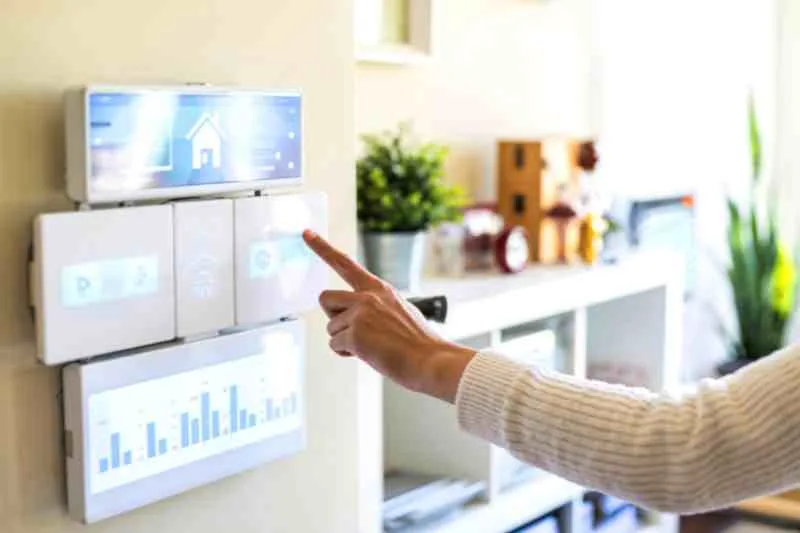Key takeaways
- Integrated building automation connects HVAC, lighting, and security systems to a central platform.
- Access control data triggers automated responses based on real-time occupancy.
- Centralized management improves energy efficiency and reduces manual oversight.
- Automation enhances security by coordinating access with monitoring tools.
- Retrofitting capabilities make automation achievable for both modern and older properties.

Managing buildings has evolved from manually controlled systems to intelligent platforms that automate daily operations. Today, property teams can use integrated systems to control heating, cooling, lighting, security, and access from a single dashboard. This reduces operational workload while improving efficiency, safety, and tenant satisfaction.
In this post, you’ll learn how integrated building automation and access control systems work together and how they can help modern property managers.
Navigate this post:
- What is integrated building automation?
- How do integrated building automation and access control systems go together?
- 5 key components of integrated building automation
- Integrated building automation use cases
- ButterflyMX: Building automation and Access Control
- Integrated building automation and access control systems FAQs
What is integrated building automation?
Integrated building automation refers to centralized control of multiple building systems through connected technology. These systems often include HVAC, lighting, security, access control, and energy management tools. Instead of relying on independent platforms, automation coordinates different technologies to communicate and operate as one.
The goal of integrated building automation is to streamline operations and reduce manual management. As such, by gathering data and responding in real time, the building becomes more efficient and responsive. For property managers, this means faster problem resolution, better visibility into building performance, and reduced utility costs.
How do integrated building automation and access control systems go together?
Access control plays a critical role in building automation by determining who enters specific areas and when. When connected to automation systems, access events can trigger additional responses. For example, when a resident unlocks their apartment door, automation may adjust the HVAC settings or turn on lights. Similarly, when an employee uses their access credential to enter a facility, automation can prepare the workspace by powering up systems based on predefined schedules.
Together, building automation and access control create smarter and more secure environments. Property teams gain centralized insights into both operational performance and security activity. This integration also enhances energy efficiency because systems only activate when areas are occupied. As such, the result is improved comfort, security, and operational control.
5 key components of integrated building automation
Key components of integrated building automation introduce the technologies and systems that work together to streamline building operations. Each element plays a role in monitoring, managing, and automating daily functions such as security, energy use, and environmental control.
Here are five key components of integrated building automation systems:
- Centralized management platform
- Sensors and data collection
- Access control devices
- Communication protocols
- Automation rules and programming
1. Centralized management platform
A centralized platform acts as the command hub. It connects all building technologies into a single interface. What’s more, users can manage temperature settings, monitor energy usage, and adjust security configurations from one place. This introduction highlights how centralization reduces the need to access multiple platforms, saving time and reducing errors.
2. Sensors and data collection
Sensors are essential for monitoring environmental and occupancy conditions. They capture data such as temperature, air quality, lighting, and movement. These insights allow the automation system to make adjustments automatically. When paired with access control, sensors also support more accurate energy management based on real-time building usage.
3. Access control devices
Access control devices such as smart readers, intercoms, and mobile credentials determine who can enter different areas. When integrated within automation systems, access control becomes a data source for occupancy and scheduling. This helps ensure that systems only activate when authorized users are present.
4. Communication protocols
Technologies often operate using different communication formats. Protocols like BACnet, KNX, and Modbus enable them to work together. This introduction sets the stage for how communication standards allow interoperability across lighting, HVAC, and security systems.
5. Automation rules and programming
Automation rules define how systems respond to specific conditions. For example, HVAC may adjust based on occupancy detected by access events, and lighting may dim outside working hours unless overridden for cleaning. Moreover, programming allows property teams to set policies that enhance efficiency without requiring manual intervention.
Discover how ButterflyMX works:
Integrated building automation use cases
So, you know what integrated building automation is, but what does it mean for you?
Below are some of the most common ways you can use integrated building automation at your property:
- Energy management
- Security and monitoring
- Workspace optimization
- Comfort and environment control
- Incident response
Energy management
Energy management is one of the most common use cases. As such, automation adjusts HVAC and lighting based on access events and occupancy. If no one enters a floor after hours, the system reduces energy output. This introduction shows how energy-saving measures help reduce utility bills and support sustainable operations.
Security and monitoring
Integrated systems improve security by combining access control with monitoring tools. Therefore, when someone enters a restricted area using their credentials, automation can activate cameras and notify relevant personnel. This reduces reliance on manual surveillance and improves awareness.
Workspace optimization
For commercial properties, automation and access data help optimize workspace usage. When teams use mobile credentials to access areas, management can review usage trends. This supports decisions about space allocation, maintenance schedules, and staffing. The introduction to this section briefly explains how occupancy tracking leads to smarter planning.
Comfort and environment control
Automation improves comfort by adjusting temperature, airflow, and lighting based on access and occupancy. For instance, when a tenant enters their home, the system automatically restores their preferred settings. This enhances satisfaction and can be a valuable amenity for multifamily residents.
Incident response
In case of an emergency, integrated systems support faster incident response. What’s more, access control can automatically unlock exits, while automation can send alerts and adjust lighting. For example, during a fire, automation may shut down HVAC and activate emergency procedures, improving safety outcomes.
ButterflyMX: Building automation and Access Control
ButterflyMX supports building automation through a unified access control platform that connects seamlessly with other systems. Its value lies in simplifying access while enabling integration with property technology and environmental controls. Property teams can manage doors, gates, elevators, and garage entries from the cloud without on-site servers.
At ButterflyMX, we integrate Video Intercoms, keyless entry, Vehicle Access Systems, and mobile credentials into one platform. When combined with building automation tools, ButterflyMX helps monitor occupancy and access events that inform energy or security responses.
ButterflyMX benefits include:
- Improved operational efficiency. ButterflyMX centralizes all access points, entry logs, and user permissions into a single platform. This eliminates the need for staff to manage multiple systems or manually track activity across different doors and gates. What’s more, with streamlined workflows, property teams can save time, reduce errors, and focus on higher-value tasks.
- Enhanced tenant experience. Residents and employees can use mobile-based access to unlock doors, gates, or elevators with their smartphones. When connected to building automation systems, this access can trigger personalized settings such as preferred lighting, climate control, or workspace configurations. This creates a seamless and convenient experience that improves satisfaction and engagement.
- Better visibility. Moreover, property managers gain a comprehensive view of building activity by monitoring access events alongside automation data. This visibility helps identify trends, detect anomalies, and plan proactive maintenance. Integrating access logs with automation tools allows managers to optimize energy use, plan cleaning schedules, and maintain equipment before issues arise.
- Remote management. ButterflyMX enables teams to manage building access from anywhere. Managers can grant or revoke permissions, view entry activity, and coordinate with automation systems without needing to be on-site. This flexibility reduces response times for visitor access, maintenance coordination, or emergency situations.
- Scalability. As a property expands or adopts additional automation technologies, ButterflyMX supports seamless growth. Its platform can integrate with new access points, security devices, and automation tools without requiring significant infrastructure upgrades. This makes it easier for property teams to scale operations and adapt to evolving tenant and building needs.
Integrated building automation and access control systems FAQs
- How does building automation reduce operational workload?
- Can existing systems integrate with building automation platforms?
- Is building automation suitable for older properties?
How does building automation reduce operational workload?
Building automation reduces workload by handling daily adjustments automatically. Instead of manually monitoring HVAC, lighting, or access points, property teams rely on automated responses based on schedules and occupancy data. This introduction helps explain how automation allows staff to focus on higher-value tasks instead of routine adjustments.
Can existing systems integrate with building automation platforms?
Many legacy systems can integrate using standardized communication protocols or software integrations. Access control devices like intercoms and readers may require updates to support data sharing. However, modern access control platforms are typically designed to connect with automation tools. This introduction clarifies that integration depends on system compatibility and available software.
Is building automation suitable for older properties?
Yes, many older buildings can adopt automation using retrofit-friendly technology. Additionally, wireless sensors, cloud-based platforms, and mobile access systems allow property teams to modernize without full-scale infrastructure upgrades. This section introduces how retrofitting makes automation accessible to a wider range of properties.

Get your free quote!
Fill in the form below, and we'll email you right back.
Want a free quote?
Fill in the form below, and we'll email you right back.
You’ll be redirected shortly...






